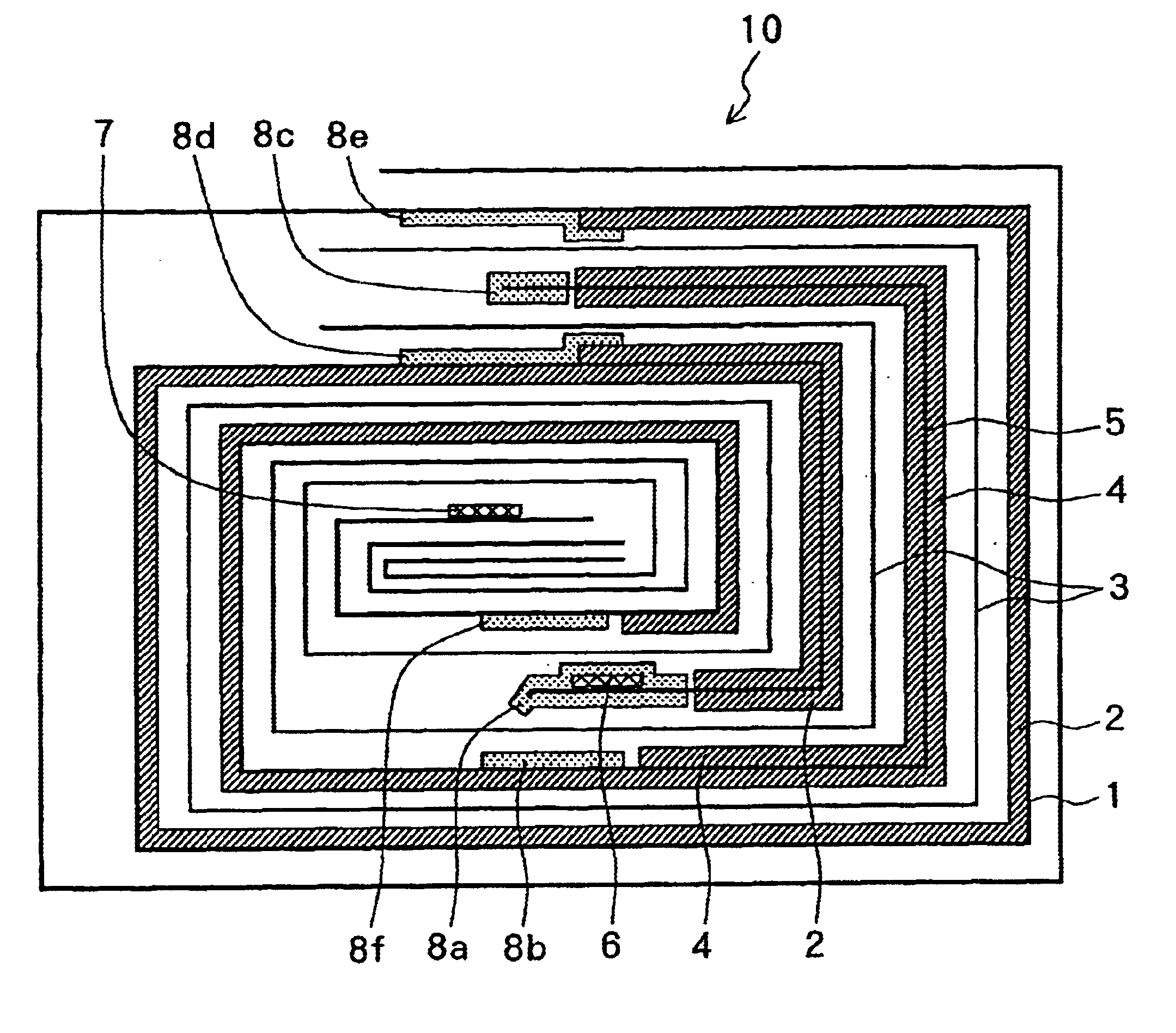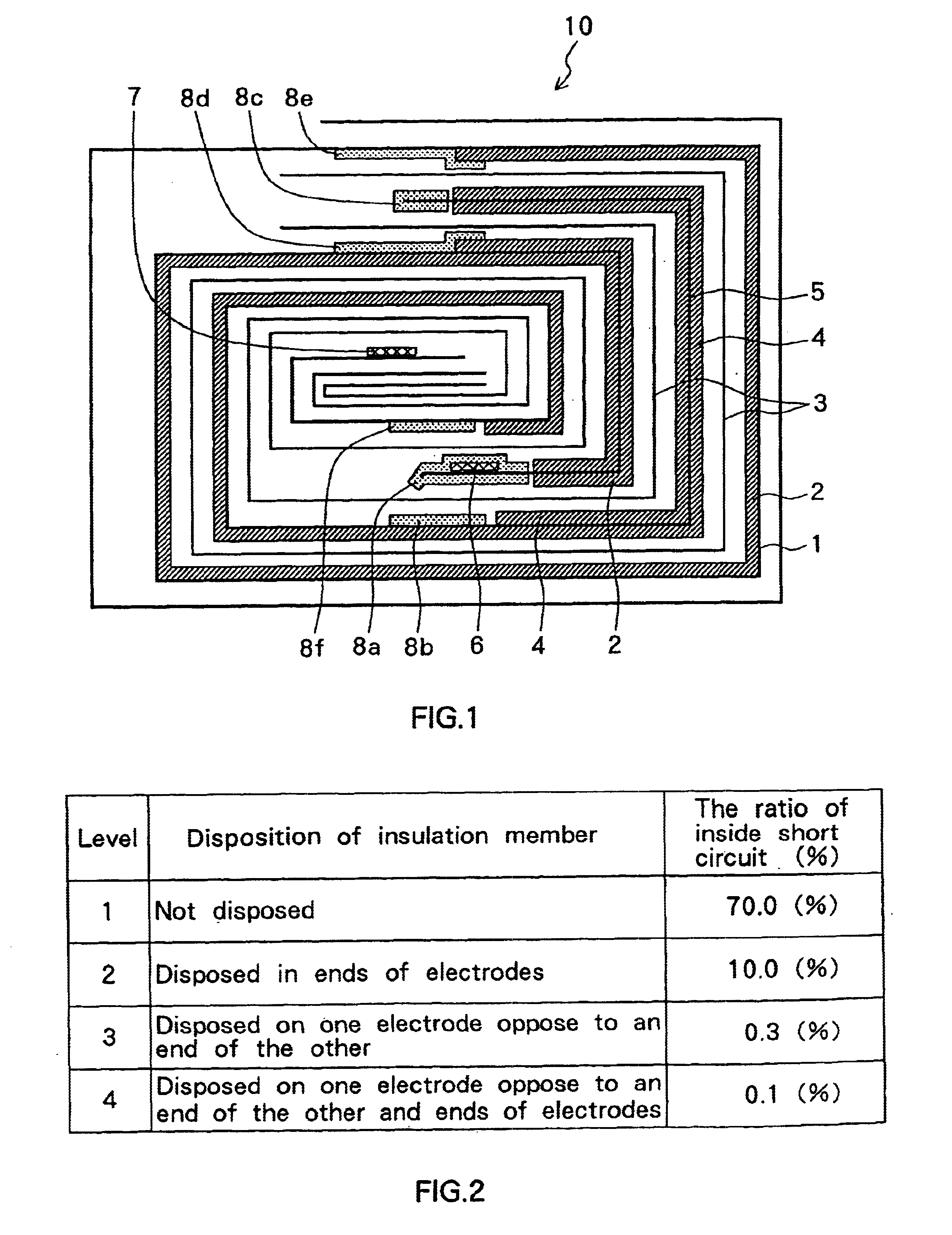Nonaqueous electrolyte secondary battery and method of manufacturing the same
a technology of nonaqueous electrolyte and secondary battery, which is applied in the direction of non-aqueous electrolyte cells, sustainable manufacturing/processing, cell components, etc., can solve the problems of increasing electrical loss, increasing electrical contact between positive and negative electrodes, and reducing battery capacity less than ordinal capacity
- Summary
- Abstract
- Description
- Claims
- Application Information
AI Technical Summary
Benefits of technology
Problems solved by technology
Method used
Image
Examples
Embodiment Construction
An experiment on observing a ratio of generating an inside short circuit (i.e., short circuit between the electrodes) in a plurality of the lithium ion polymer secondary batteries relative to the embodiment, were conducted. However, in the experiment, for the purpose of comparing the effects on each of the various structures, as shown in FIG. 2, the ratios of generating the inside short circuit in each of the following cases were observed. Such cases were: a case that any covering members are not disposed (level 1), a case that the covering members 8a and 8c are only disposed in the ends of each of the electrodes (level 2), a case that the covering members 8b, 8d, 8e and 8f are only disposed in positions on the electrodes opposed to the ends of each of the electrodes (level 3), a case that the covering members 8a, 8b, 8c, 8d, 8e and 8f are disposed in all given positions as the above-described embodiment, that is, the ends of each of the electrodes and the positions on the electrode...
PUM
| Property | Measurement | Unit |
|---|---|---|
| Pressure | aaaaa | aaaaa |
| Strength | aaaaa | aaaaa |
Abstract
Description
Claims
Application Information
 Login to View More
Login to View More - Generate Ideas
- Intellectual Property
- Life Sciences
- Materials
- Tech Scout
- Unparalleled Data Quality
- Higher Quality Content
- 60% Fewer Hallucinations
Browse by: Latest US Patents, China's latest patents, Technical Efficacy Thesaurus, Application Domain, Technology Topic, Popular Technical Reports.
© 2025 PatSnap. All rights reserved.Legal|Privacy policy|Modern Slavery Act Transparency Statement|Sitemap|About US| Contact US: help@patsnap.com


